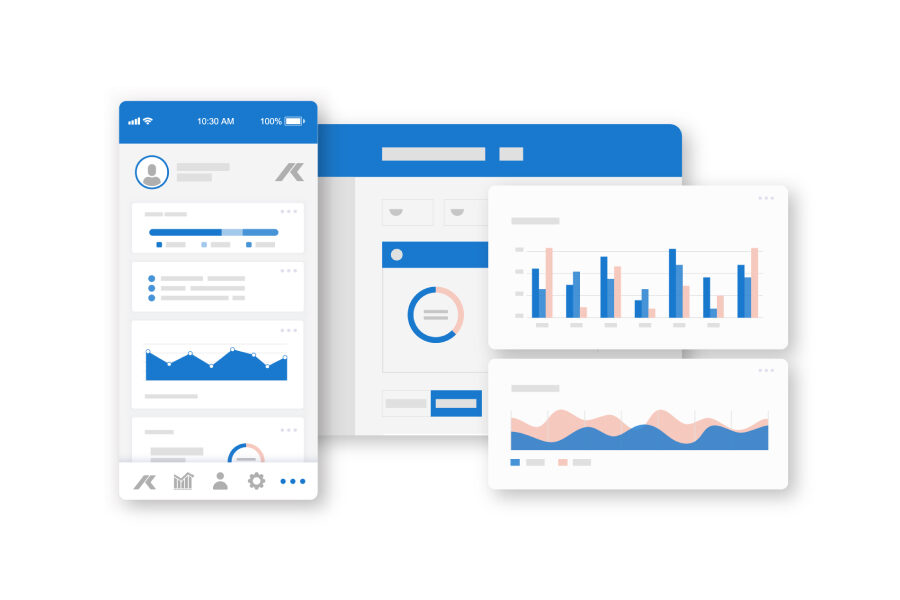Raster data as a service
Satellite data & ensemble forecasts for immediate use & integration with your monitoring data

Get access to satellite observations & ensemble forecasts
Overcome your organization’s funding & IT limitations to unlock value from increasingly available raster datasets.
We absorb high IT infrastructure costs and use our own innovations to acquire, convert and process a wide array of gridded observation and forecast datasets. Common data products are generated by the (U.S.) National Oceanic and Atmospheric Administration (NOAA) and Environment and Climate Change Canada, the North American Ensemble Forecast Suite (NAEFS).
Using our raster data as a service, provincial / state governments and local agencies now have 21st Century tools to develop more reliable local forecasts by correlating measured climate data and generating data products that power localized forecast tools.
The web-based application enables operators, planners and policymakers alike to put high accuracy, precise and hyperlocal information into action.
Your benefits
How it works
Whether your goal is cyanobacteria monitoring or flood forecasting, remote sensing data is within your reach and readily available for your use.
Product highlights
Convenient & certified secure data delivery
Convenient & certified secure data delivery
Log into the datasphere web application. This web browser interface presents insightful information in intuitive graphs and maps, and in particularly great detail for even small catchment areas.
The flexible cloud service runs in KISTERS Data Centre, which has received TÜV certification based on ISO/IEC 27001 for the interdisciplinary process of developing cloud services as well as TÜV Trusted Site Infrastructure (TSI). Recurring audits affirm that KISTERS continues to meet high standards.
Alternatively, further process the soil moisture data directly in our software, maximizing value from existing licenses and avoiding data silos, when you integrate data with KISTERS advanced analytics & prediction tools via API. Pair satellite data with our WISKI platform for full environmental data management, including visualization, in-depth analysis and prediction. Much like our HydroMaster rainfall data service, available in Canada, the soil moisture data service is intended to help environmental protection agencies and utilities limit the impact of weather events like drought on operations, assets and infrastructure.
Observational raster datasets
Observational raster datasets
The following observational datasets offer a preview of remote sensing data available:
- Canadian Precipitation Analysis System (CaPA) / High Resolution Deterministic Precipitation Analysis (HRDPA)
- 6-hour precip and quality flag data
- 24-hour precip and quality flag data
- Canadian Precipitation Analysis System (CaPA) / Regional Deterministic Precipitation Analysis (RDPA)
- 6-hour precip and quality flag data
- 24-hour precip and quality flag data
- Canadian Precipitation Analysis System (CaPA) / High Resolution Deterministic Precipitation Analysis (HRDPA)
- (U.S.) National Oceanic and Atmospheric Administration (NOAA)
Snow Data Assimilation System (SNODAS)- Snow water equivalent (SWE)
- Geostationary Operational Environmental Satellite GOES-16
- Brightness composite
- Reflectance
- Color composite
- National Aeronautics and Space Administration (NASA) Active Fire Data for North America (DS-NA)
- 10 km / daily resolution
- from MODIS and NOAA-20
Forecast datasets
Forecast datasets
The following forecast datasets represent a sample of raster data available:
- Global Environmental Multiscale Model (GEM)
also known as the Canadian Meteorological Centre (CMC) model - Global Environmental Multiscale Model (GEM) Regional
- Global Ensemble Prediction System (GEPS)
- Environment and Climate Change Canada
High Resolution Deterministic Prediction System (HRDPS)
Regional Ensemble Prediction System (REPS) - ICOsahedral Non-hydrostatic global model (ICON)
ICON Global
ICON Global Ensemble - (U.S.) National Weather Service – National Centers for Environmental Prediction (NCEP)
Global Ensemble Forecast System (GEFS)
Global Forecast System (GFS)
North American Mesoscale Forecast System (NAM) (U.S.) National Oceanic and Atmospheric Administration (NOAA)
High-Resolution Rapid Refresh (HRRR)
National Ocean Service- (U.S.) National Oceanic and Atmospheric Administration (NOAA) – Office of Water Prediction
National Water Model – Medium and Short Range - National Aeronautics and Space Administration (NASA) Fire Weather Index (global)
- 25 km / daily resolution
- new forecast every day for 7 days ahead
- Global Environmental Multiscale Model (GEM)
Soil moisture
Soil moisture
KISTERS and Planet partner to offer the first global cloud service for soil moisture data.
Patented microwave sensing enables the only area-wide technology for measuring soil moisture affordably and precisely as compared to air- or ground-based sensors. Unlike other satellite services, this method can see through clouds and vegetation to capture high accuracy measurement data.
Acquire precise data by defining specific catchment areas for information of high resolution, both in terms of spatial (detail resolution of 100 x 100 meters, or approx. 0.6 x 0.6 miles or 16 x 16 hectares) and time. Field-level, near surface data as deep as 5 cm is available.
View daily or near real timedata. Choose to receive general daily satellite-based soil moisture information for defined areas. Or get data within 6 hours after overpass of the satellite.
- In comparison, Agriculture and Agri-Food Canada releases soil moisture map products on a weekly, bi-weekly, and monthly basis from a single satellite, the ESA’s SMOS.
- NOAA’s Climate Prediction Center produces topsoil moisture maps based on the USDA state reports and monitors soil moisture calculations, which are daily derived from the Leaky Bucket land surface hydrological model.
Put data into historical context with more than 60 years of academic remote sensing experience. Up to 18 years of high resolution historical data is available. An additional 40 years of low-resolution historical data are also available.
Better prepare for drought & floods. Put drought conditions into context with soil moisture data, as the increasing infrequency yet increasingly severe storm events can infiltrate soil and recharge groundwater basins. In addition, soil moisture data can calibrate runoff models for flooding.